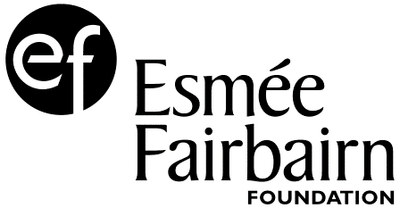Sound at the Museum
![T. K. Penniman playing a street piano (PRM 1953.1.1) outside the rear entrance to the Pitt Rivers Museum [1998.267.86] T. K. Penniman playing a street piano (PRM 1953.1.1) outside the rear entrance to the Pitt Rivers Museum [1998.267.86]](../images/1998_267_86-O.jpg) T. K. Penniman playing a street piano (PRM 1953.1.1) outside the rear entrance to the Pitt Rivers Museum [1998.267.86]This project has focused its attention on the Pitt Rivers Museum's collection of original sound recordings made in the field, some of them recorded a century ago on wax cylinders. The first collection received by the Museum was a collection of ninety-four wax cylinder recordings made in 1910–11 by the anthropologist Diamond Jenness in the D'Entrecasteaux Islands, to the east of Papua New Guinea. The collection came as supporting documentation, along with a large collection of photographs, for a collection of artefacts donated to the Museum in 1913. Other important fieldwork recordings followed in the years afterwards, and all were collected as supporting documentation for collections of related artefacts and photographs. Given the fragility of wax cylinder recordings, and the fact that their sound quality quickly diminishes after several plays, it is unlikely that they were listened to much in the years following.
T. K. Penniman playing a street piano (PRM 1953.1.1) outside the rear entrance to the Pitt Rivers Museum [1998.267.86]This project has focused its attention on the Pitt Rivers Museum's collection of original sound recordings made in the field, some of them recorded a century ago on wax cylinders. The first collection received by the Museum was a collection of ninety-four wax cylinder recordings made in 1910–11 by the anthropologist Diamond Jenness in the D'Entrecasteaux Islands, to the east of Papua New Guinea. The collection came as supporting documentation, along with a large collection of photographs, for a collection of artefacts donated to the Museum in 1913. Other important fieldwork recordings followed in the years afterwards, and all were collected as supporting documentation for collections of related artefacts and photographs. Given the fragility of wax cylinder recordings, and the fact that their sound quality quickly diminishes after several plays, it is unlikely that they were listened to much in the years following.
In the 1940s and 50s a new curator, TK Penniman, brought a new interest to music at the Museum, and efforts were made to transfer recordings onto new formats. New collections of published recordings were sought and acquired, and recordings were made of some of the Museum's instrument collection. Penniman tried to restore many of the Museum's musical instruments to working order in the hope that concerts might take place, and also oversaw the development of a collection illustrating the 'history of automatic music'.
![Hélène la Rue demonstrating the Northumbrian pipes to a group of children in the Pitt Rivers Museum [1998.356.23.6] Hélène la Rue demonstrating the Northumbrian pipes to a group of children in the Pitt Rivers Museum [1998.356.23.6]](../images/1998_356_23_6-O.jpg) Hélène la Rue demonstrating the Northumbrian pipes to a group of children in the Pitt Rivers Museum [1998.356.23.6]In the 1970s the Museum appointed its first curator for music, Hélène la Rue, whose scholarship in the field of ethnomusicology became known internationally, partly also due to her role as curator of the Bate Collection at the University's Music Faculty. Dr la Rue oversaw the development of a dedicated new gallery of musical instruments at the Museum annexe on Banbury Road in Oxford, as well as frequent music-related events that were held there from the 1980s until her death in 2007. During this period, the Museum's sound recordings were stored in better conditions and some progress was made with cataloguing the collection. But without the equipment to play such a wide range of historical formats, the collection remained for the most part unheard and unresearched. Nonetheless, new collections gradually accumulated, such as that by Raymond Clausen and Fr Damian Webb, and occasional use was made of the recordings, such as a listening post at the exhibition of Jenness's photographs at the Museum in 1991-2, made by transferring some of the wax cylinders onto audio cassette.
Hélène la Rue demonstrating the Northumbrian pipes to a group of children in the Pitt Rivers Museum [1998.356.23.6]In the 1970s the Museum appointed its first curator for music, Hélène la Rue, whose scholarship in the field of ethnomusicology became known internationally, partly also due to her role as curator of the Bate Collection at the University's Music Faculty. Dr la Rue oversaw the development of a dedicated new gallery of musical instruments at the Museum annexe on Banbury Road in Oxford, as well as frequent music-related events that were held there from the 1980s until her death in 2007. During this period, the Museum's sound recordings were stored in better conditions and some progress was made with cataloguing the collection. But without the equipment to play such a wide range of historical formats, the collection remained for the most part unheard and unresearched. Nonetheless, new collections gradually accumulated, such as that by Raymond Clausen and Fr Damian Webb, and occasional use was made of the recordings, such as a listening post at the exhibition of Jenness's photographs at the Museum in 1991-2, made by transferring some of the wax cylinders onto audio cassette.
In 2011 the Museum applied to the Esmée Fairbairn Collections Fund for a one-year project to digitize all the original sound recordings in the Museum, and to make a selection of them available for all to listen to online and at a series of events at the Museum. We brought together a range of expert sound curators, sound artists and museum professionals to think through audience engagement and the delivery of sound. The project has transformed the collection into a dynamic museum resource, complementing related collections for the first time, and finally achieving their purpose as one limb of a single body of ethnographic fieldwork, alongside the rich object and photograph collections of the Museum.


